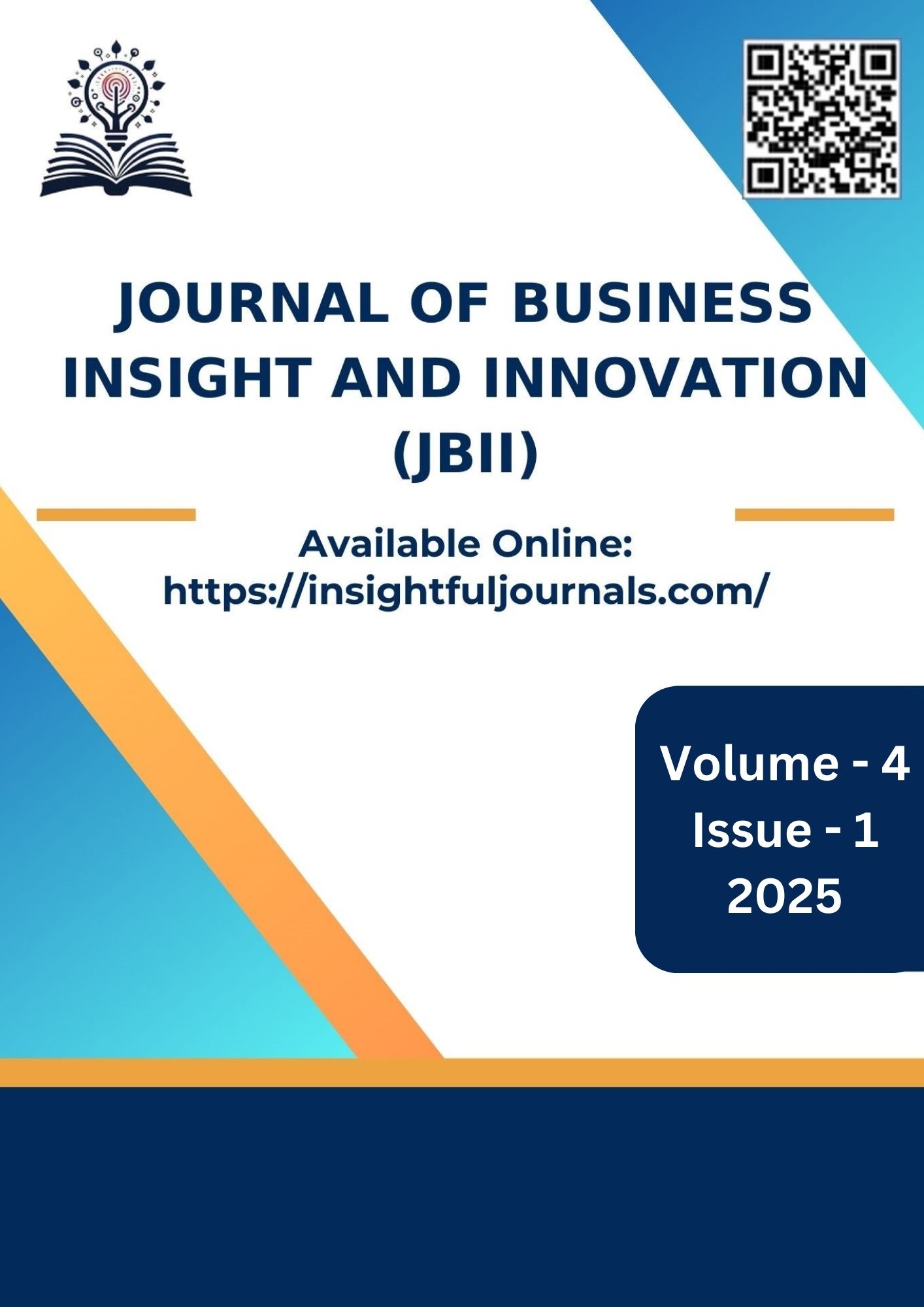Eco-Credibility: Monetizing Biodiversity through Digital Species Tracking in Conservation Business Models
Keywords:
Eco-Credibility, Biodiversity, Monetize, Verifiable, BlockchainAbstract
Biodiversity monitoring is fundamental to conservation, yet its potential to generate economic value remains largely untapped due to fragmented, often analog, data collection methods. This review introduces the "Eco-Credibility" model, a conservation business framework designed to monetize biodiversity by leveraging emerging technologies for transparent species tracking. We argue that the business value of verifiable species data is a significant, overlooked asset. The current state of monitoring, characterized by paper-based records and inconsistent protocols, results in missed opportunities in ethical tourism, green finance, and corporate Environmental, Social, and Governance (ESG) reporting. We explore how technologies such as Internet of Things (IoT) sensor networks, AI-powered camera traps, acoustic monitoring, environmental DNA (eDNA), and blockchain ledgers can automate the creation of immutable, timestamped biodiversity logs. The Eco-Credibility model proposes that these verifiable data streams can be transformed into marketable assets. By providing authenticated proof of a site’s ecological health, conservation projects can attract premium ecotourism, secure results-based grants, and generate revenue through emerging biodiversity credit markets. Using potential pilot projects in South Asia such as monitoring the Indus River Dolphin or the fauna of the Margalla Hills National Park. Researcher illustrate the model’s practical application. However, researchers also address the significant systemic constraints and ethical risks, including data misuse by poachers, the threat of digital colonialism, and technological biases. The review concludes that by embedding ethical governance and local community control, the Eco-Credibility model offers a viable pathway to align market incentives with conservation goals, transforming biodiversity into a self-sustaining economic asset.
References
Aslam, I., & Yasmeen, R. (2021). Vertebrate diversity at Margalla Hills National Park, Pakistan. Arxius de Miscellània Zoològica, 19, 237-247.
Castello, L. (2023). Filling global gaps in monitoring data with local knowledge. Aquatic Conservation, 33(5).
Çevik, T., & Çevik, N. (2025). Environmental DNA (eDNA): A review of ecosystem biodiversity detection and applications. Biodiversity and Conservation, 1-37.
Dryga, A., Tsiulin, S., Valiavko, M., Qing, Y., & Reinau, K. H. (2019, August). Blockchain-based wildlife data-management framework for the WWF bison rewilding project. In Proceedings of the 2nd International Conference on Big Data Technologies (pp. 62-66).
Hadi, A., Rais, M., Muddassir, I., Tasib, A., Zafar, M., & Gill, S. (2022). Avian Assemblage, Monitoring and Bioassessment of Margalla Hills National Park, Islamabad Capital Territory, Pakistan. Pakistan Journal of Zoology, 55(4), 1917-1926.
Jaquet-Chiffelle, D. O., Casey, E., & Bourquenoud, J. (2020). Tamperproof timestamped provenance ledger using blockchain technology. Forensic Science International: Digital Investigation, 33, 300977.
Müller, J., Mitesser, O., Schaefer, H. M., Seibold, S., Busse, A., Kriegel, P., ... & Buřivalová, Z. (2023). Soundscapes and deep learning enable tracking biodiversity recovery in tropical forests. Nature communications, 14(1), 6191.
Norouzzadeh, M. S., Morris, D., Beery, S., Joshi, N., Jojic, N., & Clune, J. (2021). A deep active learning system for species identification and counting in camera trap images. Methods in ecology and evolution, 12(1), 150-161.
Pain, D. (2018, July 24). Open data offer risks and rewards for conservation. Nature. https://www.nature.com/articles/d41586-018-05800-y
Rais, M., Ahmed, J., Naveed, A., Batool, A., Shahzad, A., Bibi, R., & Sajjad, A. (2021). Field surveys along habitat gradients revealed differences in herpetofauna assemblage in Margalla Hills National Park, Islamabad, Pakistan. Biodiversity Data Journal, 9, e61541.
Ramachandran, A., & Kantarcioglu, D. M. (2017). Using blockchain and smart contracts for secure data provenance management. arXiv preprint arXiv:1709.10000.
Ramachandran, A., & Kantarcioglu, M. (2018, March). Smartprovenance: a distributed, blockchain based dataprovenance system. In Proceedings of the Eighth ACM Conference on Data and Application Security and Privacy (pp. 35-42).
Shukla, S., Abiha, U., Bhutani, R., Kapoor, N., & Shukla, S. K. (2025). Blockchain Technology for Environmental Conservation. In Microbial Biocontrol Techniques: Importance in Ensuring Food Security (pp. 323-362). Singapore: Springer Nature Singapore.
Soriano-Redondo, A., Bearhop, S., Lock, L., Votier, S. C., & Hilton, G. M. (2017). Internet-based monitoring of public perception of conservation. Biological conservation, 206, 304-309.
Thau, D., Ahumada, J. A., Birch, T., Fegraus, E., Flores, N., Jetz, W., ... & McShea, W. J. (2019). Artificial intelligence's role in global camera trap data management and analytics via Wildlife Insights. Biodiversity Information Science and Standards, 3, e38233.
Tulloch, A. I., Auerbach, N., Avery-Gomm, S., Bayraktarov, E., Butt, N., Dickman, C. R., ... & Watson, J. E. (2018). A decision tree for assessing the risks and benefits of publishing biodiversity data. Nature ecology & evolution, 2(8), 1209-1217.
United Nations Development Programme. (2020). Moving Mountains: Unlocking private capital for biodiversity and ecosystems. https://www.biodiversityfinance.org
Urbano, F., Viterbi, R., Pedrotti, L., Vettorazzo, E., Movalli, C., & Corlatti, L. (2024). Enhancing biodiversity conservation and monitoring in protected areas through efficient data management. Environmental Monitoring and Assessment, 196(1), 12.
Vizzuality. (2025, May 22). Bridging biodiversity gaps: OpenNature, one year later. Vizzuality Blog. Medium. https://medium.com/vizzuality-blog/bridging-biodiversity-gaps-opennature-one-year-later-db6f4559f3cf
World Economic Forum. (2021). Investing in forests: The business case. In collaboration with Dalberg. https://www.weforum.org/publications/investing-in-forests-the-business-case/
WWF-Pakistan. (2022). First-ever satellite tagging of river dolphins in Asia. Retrieved from https://wwf.panda.org/wwf_news/?4902466/First-ever-satellite-tagging-of-river-dolphins-in-Asia
Downloads
Published
How to Cite
Issue
Section
License
Copyright (c) 2025 Mudassar Maqbool

This work is licensed under a Creative Commons Attribution-NonCommercial-ShareAlike 4.0 International License.





